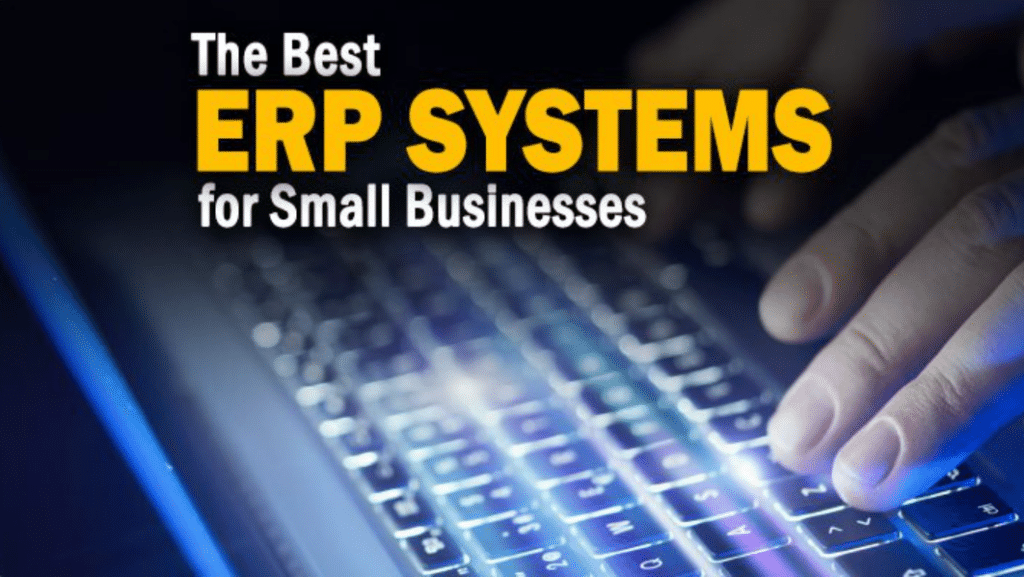In the dynamic landscape of small businesses, managing operations seamlessly is crucial for success. As technology continues to evolve, more small businesses are turning to ERP (Enterprise Resource Planning) systems to streamline processes, enhance productivity, and foster sustainable growth.

I. Introduction
A. Defining ERP for Small Business
ERP for small business refers to tailored software solutions designed to integrate and manage key business processes in a unified platform. This includes everything from accounting and human resources to inventory and customer relationship management.
B. The Significance of ERP for Small Businesses
In an era where agility and adaptability are paramount, ERP systems empower small businesses to compete with larger counterparts by offering efficiency, accuracy, and strategic decision-making capabilities.
II. Key Features of ERP for Small Business
A. Integrated Data Management
One of the primary benefits of ERP is the consolidation of data into a centralized database. This enables real-time access to information, reducing errors and ensuring consistency across departments.
B. Streamlined Workflow
ERP systems automate routine tasks, eliminating manual processes that are prone to errors. This streamlines workflow, allowing employees to focus on more strategic and value-added activities.
C. Scalability
As small businesses grow, their needs evolve. ERP systems are scalable, accommodating the changing requirements of a growing business without the need for a complete overhaul.
D. Improved Reporting and Analytics
ERP software provides robust reporting tools and analytics, offering valuable insights that aid in better decision-making. Small businesses can leverage data-driven insights to identify opportunities and mitigate challenges.
III. Advantages of Implementing ERP for Small Business
A. Enhanced Efficiency
By automating repetitive tasks and providing real-time data, ERP systems significantly enhance operational efficiency. This allows small businesses to do more with less, maximizing resources effectively.
B. Cost Savings
Small businesses often operate on tight budgets. ERP systems contribute to cost savings by reducing manual errors, optimizing inventory management, and streamlining processes, ultimately improving the bottom line.
C. Increased Customer Satisfaction
Efficient order processing, inventory management, and timely deliveries, facilitated by ERP, contribute to improved customer satisfaction. Satisfied customers are more likely to become repeat customers and brand advocates.
D. Strategic Decision-Making
Access to accurate and timely data empowers small business owners to make informed decisions. Whether it’s identifying profitable products or optimizing supply chain processes, ERP facilitates strategic decision-making.
IV. Challenges in Implementing ERP for Small Business
A. Initial Investment
While the long-term benefits are significant, the initial investment in ERP implementation can be a challenge for small businesses with limited capital.
B. Employee Training
Introducing a new system requires training employees. Small businesses may face resistance to change or find it challenging to allocate time for comprehensive training.
C. Customization Complexity
ERP systems need to align with the unique processes of a business. Customizing the software to fit specific needs can be complex and may require expert assistance.
V. Best Practices for Successful Implementation
A. Conducting a Needs Assessment
Understanding the specific needs and goals of the business is crucial for successful ERP implementation. This assessment guides the selection and customization of the ERP system.
B. Employee Involvement
Involving employees in the implementation process, from the planning stage to training, fosters a sense of ownership and minimizes resistance.
C. Choosing the Right Vendor
Selecting a reputable ERP vendor that specializes in solutions for small businesses ensures compatibility and ongoing support.
VI. Real-life Success Stories
A. Small Businesses Thriving with ERP
Exploring real-life success stories of small businesses that have implemented ERP provides insights into the transformative impact of these systems on efficiency and growth.
B. Lessons Learned
Analyzing the experiences of other small businesses helps in understanding common challenges and effective strategies for overcoming them during ERP implementation.
VII. Future Trends in ERP for Small Business
A. Cloud-Based Solutions
The future of ERP for small businesses lies in cloud-based solutions, offering increased flexibility, accessibility, and cost-effectiveness.
B. Mobile Integration
As mobile technology continues to advance, ERP systems are expected to integrate seamlessly with mobile devices, providing on-the-go access to critical business information.
C. AI and Automation
The integration of artificial intelligence and automation will further enhance the capabilities of ERP systems for small businesses, automating routine tasks and providing intelligent insights.
VIII. Choosing the Right ERP for Your Small Business
A. Consideration Factors
When selecting ERP for a small business, factors such as scalability, cost, user-friendliness, and industry-specific features should be carefully considered.
B. Popular ERP Options for Small Businesses
Explore popular ERP options tailored for small businesses, including QuickBooks, SAP Business One, and Odoo, comparing features and suitability for different industries.
IX. Steps to Implement ERP for Small Business
A. Planning and Assessment
A well-planned implementation starts with a thorough assessment of business needs and goals, ensuring the chosen ERP system aligns with these requirements.
B. Pilot Phase
Implementing ERP in phases, starting with a pilot phase, allows small businesses to identify and address issues before full-scale deployment.
C. Continuous Improvement
ERP implementation is an ongoing process. Regularly assess and update the system to ensure it continues to meet the evolving needs of the business.
X. Evaluating ROI in ERP for Small Business
A. Measuring Success Metrics
Define key performance indicators (KPIs) to measure the success of ERP implementation, including improvements in efficiency, cost savings, and customer satisfaction.
B. Long-term Benefits
Explore the long-term benefits of ERP for small businesses, including sustained growth, adaptability to market changes, and the ability to stay competitive.
XI. Conclusion
A. Unlocking the Potential of Small Businesses with ERP
In conclusion, ERP for small business is a game-changer, unlocking the potential for efficiency, growth, and competitiveness. As small businesses navigate the challenges of the modern business landscape, investing in ERP systems proves to be a strategic move towards sustainable success.